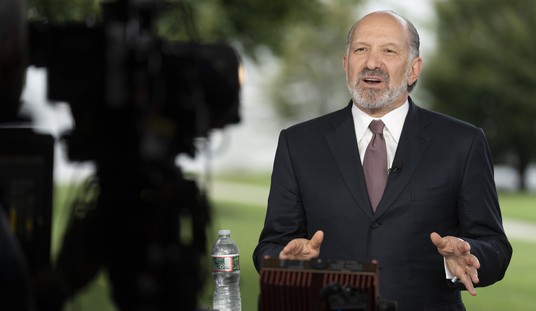The selection of Paul Ryan to be Mitt Romney’s running mate has electrified conservatives and appears to have boosted Romney both nationally and in key battleground states. While Nate Silver of Real Clear Politics has estimated that the Ryan pick has been worth only two points so far to Romney, I believe it currently could be worth more than that.
It is likely too early to measure the full Ryan impact. The Gallup poll is a seven-day sample; some of the days in its latest daily average include pre-Ryan selection days. There are not yet any national surveys by the once-a-month pollsters conducted entirely after Ryan was named.
The two tracking polls are in the market every night with 500 interviews each; both Gallup and Rasmussen have shown a several-point swing to Romney in the last 10-14 days. Rasmussen has moved from Obama +2 to Romney +1. Gallup has moved from Obama +4 to Romney +2. Because Gallup is a seven-day sample, its daily average generally changes less rapidly than Rasmussen.
Both polls have been fairly stable for the last few months, with Romney’s and Obama’s numbers in the 45-50% range, so the shift in both surveys is likely not happenstance. Some of the shift occurred after the Ryan pick and some before –possibly blowback from the “Romney caused my wife to die of cancer” ad by the Obama Super PAC.
Nate Silver’s model produces a two- to three-point lead for Obama at the moment. The tracking polls suggest otherwise.
For a few weeks, a series of national polls by once-a-month pollsters — Fox, Reuters, Pew, IBD, and CNN — suggested that Obama was pulling away. The Obama lead was 7-10 points in each survey. But each of these polls included samples with far more Democrats than Republicans. Given that so far this year most every survey shows Democrats giving 90% support for Obama and Republicans giving 90% support for Romney, oversampling one side or the other by five or ten points turns out to be the entire story in a poll. Some pollsters, such as Rasmussen, attempt to keep the party shares among those interviewed each night roughly consistent with shares for the two parties and for independents, based on support for candidates in prior elections and other measures.
If you get a sample in a survey that tells the pollster it supported Obama by 14% in 2008 when he won nationally by 7%, or that it supported Obama by 13% in Florida when he won the state by 3%, you likely have too many Democrats or Democratic-leaning independents in that sample. Silver has admitted that some polls — such as Pew, Reuters, and PPP — have had large slants towards the Democrats this year (three to four points).
The election will be decided, of course, in the Electoral College and not by the national popular vote, which has incorrectly picked the winner four times. (In 1824, due to a multiple-candidate race with no majority of electors won by any of the candidates, the race was thrown to the U.S. House, where John Quincy Adams prevailed.)
In the last two weeks, at least one poll has shown Romney ahead in Indiana, Missouri, North Carolina, Ohio, Florida, Virginia, Colorado, Iowa, and now Wisconsin. Adding the Electoral College votes from these states to the states where Romney is assumed to have locked up the win or to have a safe lead, the Romney total reaches 291. Of course, there have been other polls in some of these states that have been less favorable to Romney. Obama has led in polls in Nevada and New Hampshire by mid-single digits.
A week ago, the RealClearPolitics.com average for Ohio — a state that has been part of every Republican presidential election victory since the party was founded — showed about a five-point lead for Obama, close to the same margin Obama achieved in 2008. This deficit was a reason why many thought Ohio Republican Senator Rob Portman would be the logical choice to run with Romney. But in the last two days, we’ve seen three shifting Ohio polls: Rasmussen shows a tie, PPP has a three-point lead for Obama, and Purple Strategies gives a two-point lead to Romney. The state now appears to be a toss-up, or a very small Obama lead. The Purple Strategies poll of the battleground states indicates the race is also very close in Florida, Virginia, and Colorado. Romney leads in all but Colorado in this collection of polls.
Silver’s model today gives Obama a 70% chance of victory. This seems too high, though in fairness, his latest runs were done before the Purple Strategies polls were released. The national tracking polls and the state polls released this week do not provide much evidence of why Obama would be a more than two-to-one favorite.
The Intrade betting line has tightened, with Obama now a four-to-three favorite (a 14% edge), down from almost five-to-three a week ago (a 22% edge).
The best case for why Obama remains a slight favorite is that Romney needs to win more of the toss-up states to get to 270. Obama’s base is larger than Romney’s. If Michigan, Pennsylvania, and Minnesota remain solid for Obama, he has 237 Electoral College votes, not far from the 270 needed. Romney seems to be solid in states with 191 Electoral College votes.
A win in either Ohio or Florida would almost assure Obama’s re-election. Romney needs to win North Carolina (where he is ahead), Florida, Ohio, and Virginia (all of which are about even or slight Obama leads), and then one more — Colorado, Iowa, New Hampshire, and Wisconsin are all possibilities. Nevada seems more of a stretch. An earlier PPP poll in Wisconsin suggested that Ryan on the ticket cut Obama’s lead from 6% to 1%. No Republican has won Wisconsin since Ronald Reagan in 1984, and Obama had a big win there in 2008 (14%). However, the GOP has come very close on several occasions and as recently as 2000 and 2004, and of course the GOP won both the Senate and governor races in 2010 and the recall election earlier this year.
If the candidates finish up even in the popular vote, it is likely that Obama will win the Electoral College race. It seems unlikely that Romney will run stronger in the battleground states than nationally, and therefore win enough of the close state races to get to 270. Romney might need a two- to three-point popular vote win to string together the states he needs. In 2004, Bush won by 2.4%, and carried 31 states with 286 Electoral College votes. Those states today have 6 more Electoral College votes, but New Mexico’s five are almost certainly lost to Romney. Bush won Ohio and Nevada by 2%, Florida and Colorado by 5%, and Iowa by less than 1%. Bush won Virginia and North Carolina more decisively (8% and 12%), but both states had large shifts for Obama in 2008 due to much higher African American voter participation. Colorado and Nevada have also become less GOP-friendly the last few years, with growing Hispanic voter participation.
This year, only the GOP gets a bump for naming its vice president. The Democrats get a pair of chains. Each party will get a bump at its convention, though the GOP has more room to grow, since Romney and Ryan really get to introduce themselves to some people for the first time at this event.
The race could look a lot different when the debates roll around.









Join the conversation as a VIP Member